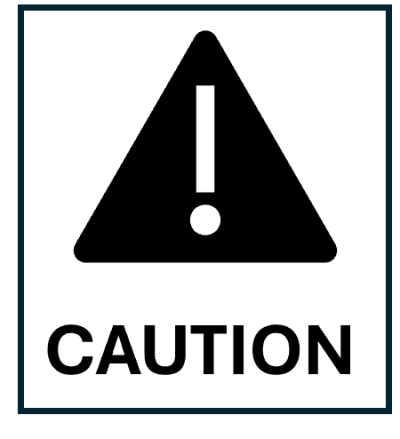Neurodiversity information for parents and young people
About pacemakers
A pacemaker is a small electronic device used to treat abnormal heart rhythms which can cause your heart to beat too slowly or miss beats. It consists of a battery and computer plus one or two leads which are passed down a vein into your heart.
Pre-assessment appointment
Before the fitting procedure we will ask you to attend a pre assessment appointment. A specialist nurse will explain to you why you need to have a pacemaker and how the procedure is carried out. They will give you a blood test, and MRSA swab (to check for bacterial infection), on the same day.
Preparing for your procedure
- If you can, we recommend you have a shower before you come to the hospital.
- We recommend you have a light early breakfast before 6am. You will not be able to eat or drink after 6 am. (After we have fitted your pacemaker, we will give you some refreshments and a sandwich at the hospital).
- Wear comfortable, loose clothing to the hospital.
- Remove all jewellery and nail varnish before you arrive.
- You can bring your phone, spectacles, and hearing aids with you.
- Bring a dressing gown, slippers and your medicines.
|
You must plan for someone to collect and take you home and accompany you overnight after your procedure. If you cannot arrange for a relative or friend to stay with you, let hospital staff know. You can let them know at your pre assessment appointment. |
Important information
- If you are diabetic and taking insulin, check your blood sugar level and take only half of your usual dose on the morning of your procedure.
- If you are taking warfarin, the nurses will advise how to manage your dosage before your procedure.
- If you are taking rivaroxaban, apixaban, edoxaban or dabigatran, the nurses will advise you when to stop taking your dose prior to your procedure (usually 24 hours before). They may refer you to the hospital’s anticoagulation clinic where you will receive specific instructions.
What happens during the procedure
- The procedure is performed under local anaesthetic. This means we numb the relevant area of your body. We can give you a sedative to help you relax if you need it. We measure your observations (body temperature, breathing etc) and attach you to a monitor. We then cover you with a sterile sheet.
- The doctor makes a small cut under your collar bone (usually on your non-dominant arm). The doctor then passes the pacemaker leads down a vein into your heart using x ray guidance.
- One lead will be positioned in your right ventricle and, if clinically indicated, another one in your right atrium (the ventricle and atrium are chambers of your heart). We secure the leads with stitches and the doctor makes a small pocket under your skin to hold the pacemaker device in place.
- The doctor then closes the wound with dissolvable stitches and steri-strips. The whole procedure usually takes about an hour.
Professional observersThe department where your procedure will take place regularly has professional observers present. Most of these observers are healthcare professionals who are qualified or in training. Occasionally they are specialist company representatives.
|
Immediately after the procedure
- We keep you in our recovery area and monitor you for around 4 hours.
- We give you a chest x ray a few hours after your procedure.
- A cardiac healthcare professional gives you an initial pacemaker check. They also give you an ID card which contains your patient details and details about the type of pacemaker that we have fitted. This is useful if you ever need treatment at a different hospital.
- We book an appointment for your 6 week follow up.
- Your nurse gives you your dressings to go home with and teaches you how to take care of your wound. It is important that you look for signs of infection, swelling or bleeding. Typical signs of infection might be: the wound site feels hot to touch, looks red, is causing you pain or develops pus. Other signs might be that you develop a high temperature, feel dizzy or breathless or experience flu like symptoms.
- If you need to, you can take paracetamol or any other painkiller that you usually take.
Self-care for the first month after your procedure
For the first month after your procedure:
- Be careful not to lift the affected arm above your shoulders.
- Be careful not to over extend the affected arm.
- Be careful not to put too much pressure on it. This helps to stop the pacemaker leads from moving around before they settle into your heart.

If you drive, you must let the DVLA know that you have had a pacemaker fitted. You must also wait 1 week before you drive.
How long the pacemaker battery lasts
The pacemaker battery usually lasts around 8 to 10 years. We will check your pacemaker regularly during this time. Our regular checks will detect any problems and determine when the battery needs replacing. Battery replacement is carried out in the pacemaker clinic and takes 30 to 45 minutes.

Once your pacemaker is fitted, be careful around some forms of equipment which contain magnets because this can affect your pacemaker. Examples include metal detectors and airport security gates.
![]()
For more advice, speak to staff in the Kingston Hospital pacemaker clinic (see Contacts).
More information
Information on pacemakers from the British Heart Foundation
British Heart Foundation video on having a pacemaker fitted
NHS information on day case coronary angiogram
NHS information on TOE (transoesophageal echocardiogram)
Contact information
Cardiology Investigations, Monday to Friday 9am to 5pm
Telephone:
020 8546 7711 extension 3872
